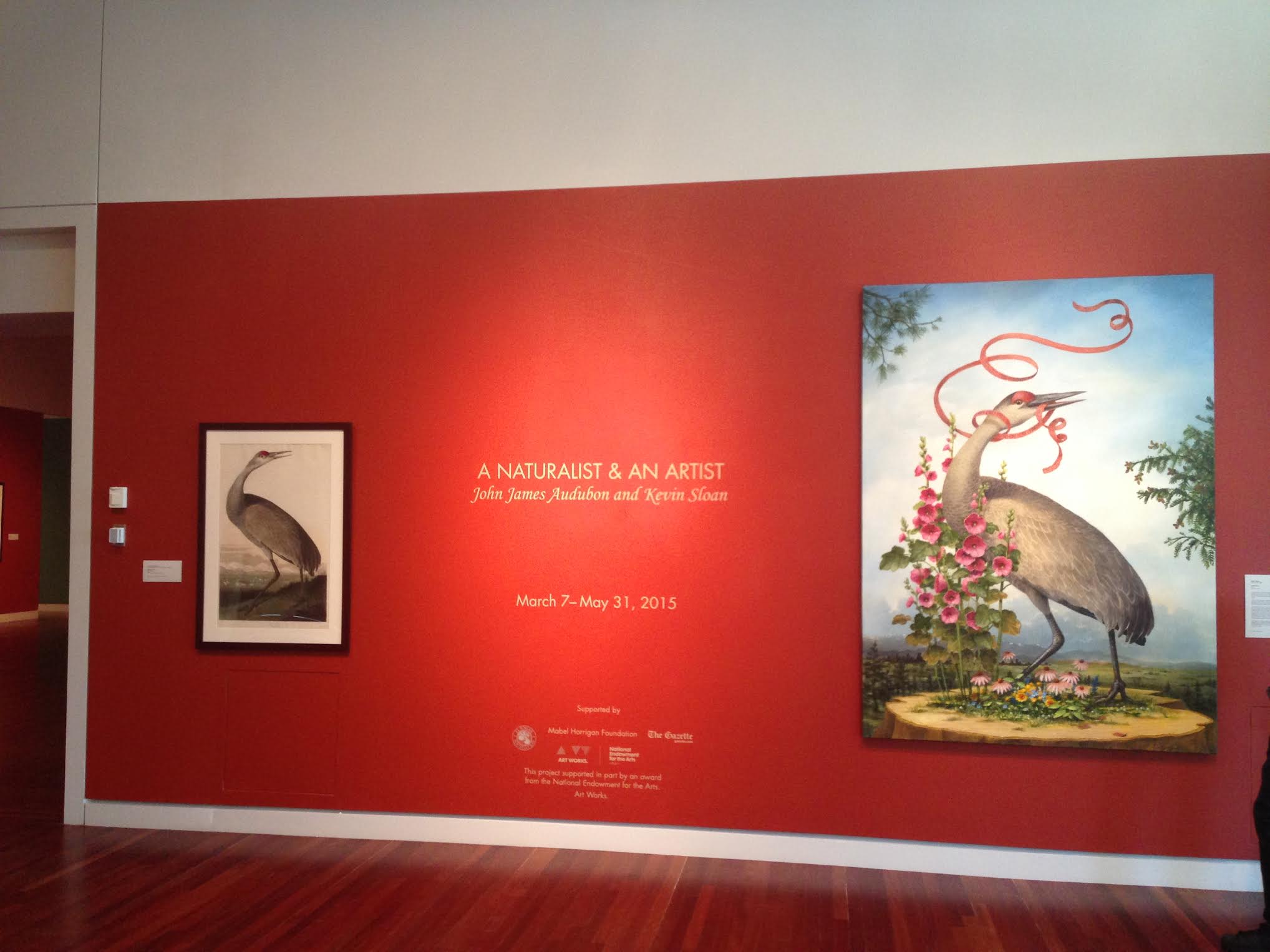The Local newsletter is your free, daily guide to life in Colorado. For locals, by locals.
Ornithologist John James Audubon and oil painter Kevin Sloan are not your average collaborative artists. Actually, they’ve never met, due to the fact that the former died in 1851. The latter, however, isn’t fazed by this particular foible on the part of his feather-frenzied friend. “I like the idea of collaboration in that his work is well known,” says Sloan. “We all know who he is, more or less. His work is something that has reverberations into the 21st century and it’s reverberating through me. I’m bringing him along into the present time, to kind of embrace his work through contemporary eyes.”
Audubon (whose name has become synonymous with birds and bird conservation) set off across North America in the 19th century to illustrate and describe our continent’s diverse avifauna, leaving a pronounced legacy in the birding and conservation world. In “A Naturalist and an Artist: John James Audubon and Kevin Sloan“, 25 out of Audubon’s 437 hand-colored, life-size “Birds of America” prints are on display at the Colorado Springs Fine Arts Center, in a room adjacent to where Sloan’s 25 allegorical realist oil paintings are hung. The FAC received a $20,000 grant from the National Endowment for the Arts for the exhibition, which runs until May 31.

Sloan, who currently resides in Denver, started painting birds eight years ago and was struck by the peculiar artistic value of Audubon’s taxonomical compositions. “There’s an Audubon painting of the snowy egret, bent over in this odd way,” says Sloan. “The back is kind of flat, and it looks like there’s something on it. In one of my depictions, [the egret’s back] is piled up with all kinds of suitcases and the title of the painting is ‘Welcome to the Wilderness.’ It depicts what happens when the natural world and the human or manmade world collide. It’s an allegory of how we interact with nature to its disadvantage, but there‘s also humor to it.”
Sloan’s unexpected and elaborate avian paintings lend a contemporary and analytical eye to Audubon’s more scientific approach to their migratory muses. His winged representations include quirky touches like floral arrangements, eight balls, playing cards, and stacks of books. “The natural world, now mostly understood and familiar, is also increasingly threatened, making it once again rare and exotic,” says Sloan. “Freed from the need to describe for science, I can describe the natural world and our interaction with it through an allegorical, social, and political lens.”
While Audubon trudged through swamps and forests to catch sight of his subjects, Sloan is grateful to sift through books and web pages as his sources of reference. But in his opinion nothing beats the real thing, so he often walks to City Park to admire its resident water birds.
“I want to honor [Audubon’s] work,” says Sloan, whose favorite Audubon print is of the vibrantly pink Roseate Spoonbill. “I do that by trying to reference his work as accurately as I can. If he’s drawing the bird one way, I do the same.” He includes a small thank you to the ornithologist on the back of each of his canvases, in recognition of the artist’s legacy and influence on his own work.
The FAC is inviting members of the community to be a part of this cross-century collaboration by voting for their favorite Audubon print via Facebook. The exhibit will be on display until May 31 at the Colorado Springs Fine Arts Center, 30 W. Dale St., Colorado Springs, 719-634-5581, csfineartscenter.org








